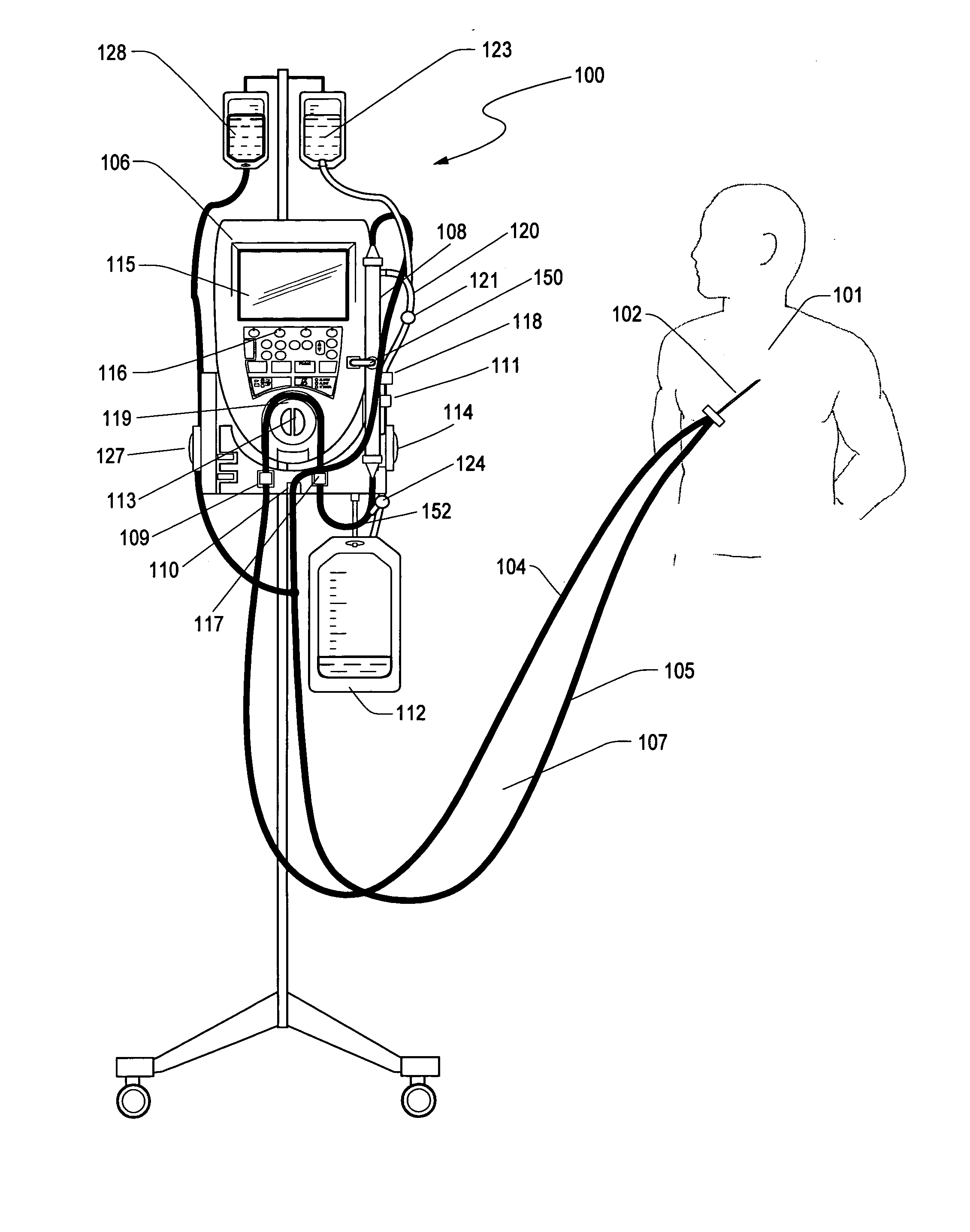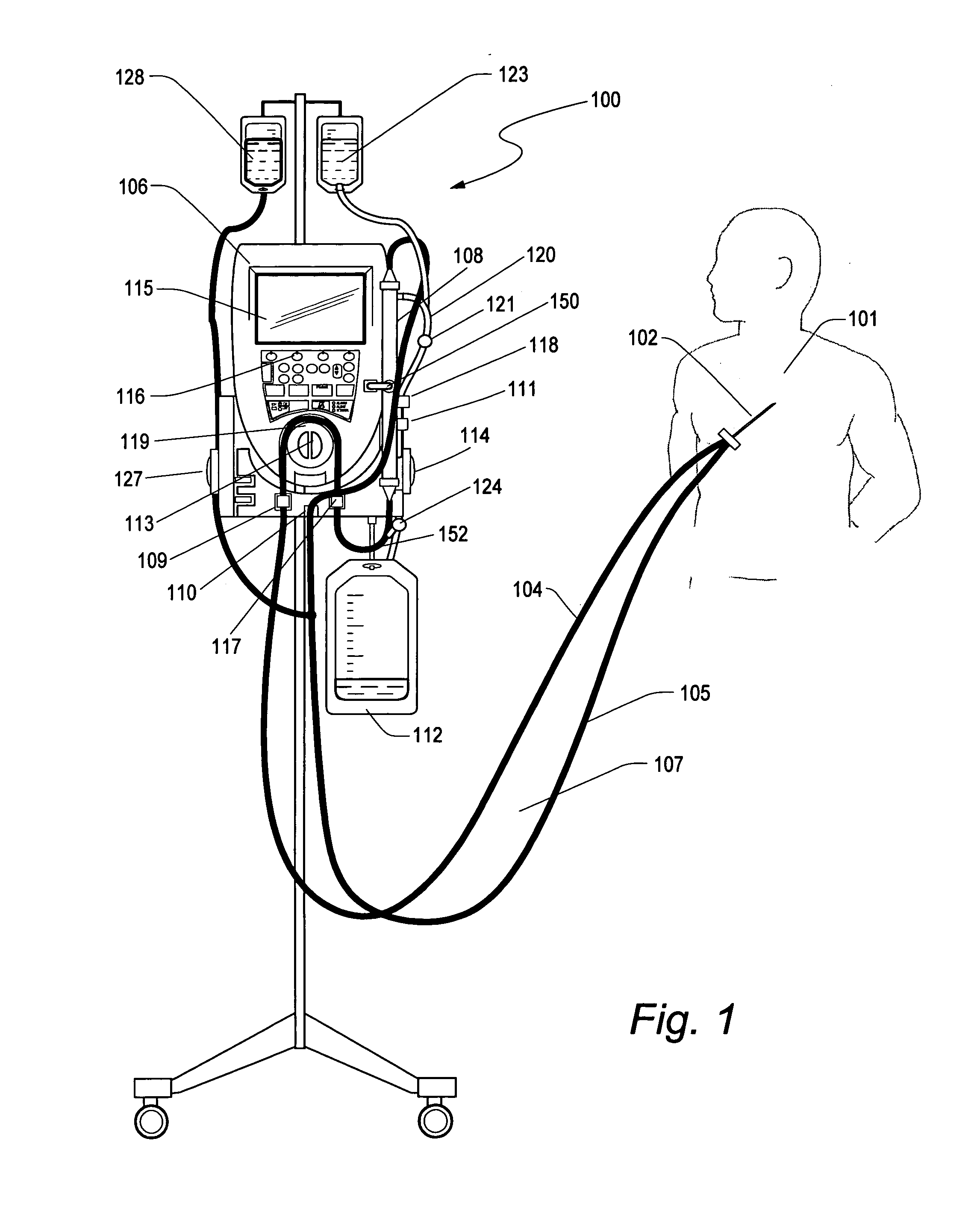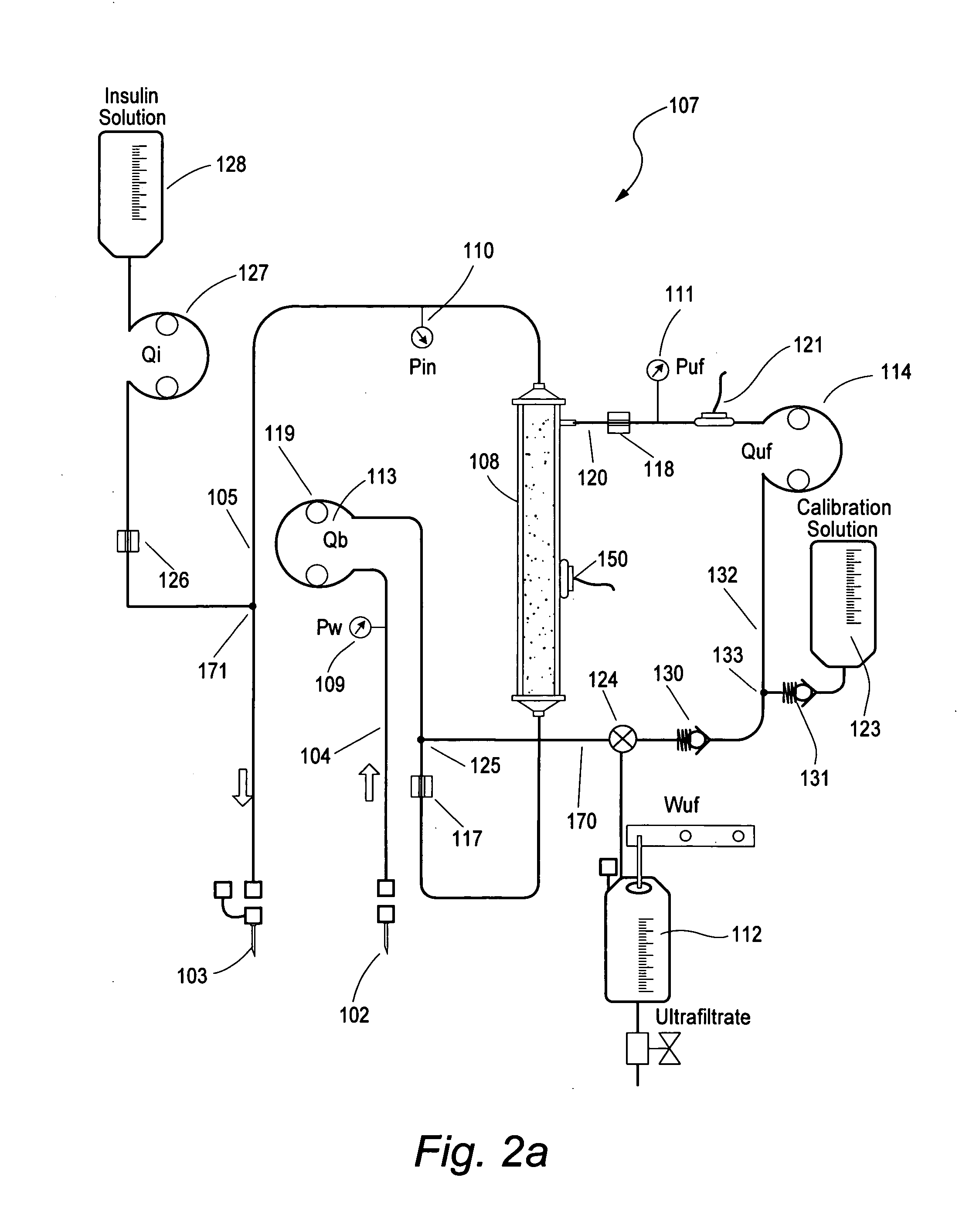[0012] A device has been developed for controlling the level of glucose in
critically ill patients in a hospital that does not suffer from the limitations of currently proposed implanted
closed loop control devices. The majority of
ICU patients have a short term CVC (Central Venous Catheters) implanted shortly after admission for the purpose of taking clinical measurements and infusing
drug therapies. Such catheters are generally between 7 and 8F (French), double or triple lumen and can support blood flows of 40 ml / min or less. Such catheters are ideal of low flow
extracorporeal therapy because they can sustain low flow for extended periods of time (>72 hrs) with few interruptions without clotting or causing access issues. This has been the experience of the Aquadex®
System 100 fluid removal device in the ICU environment.
[0014] In another embodiment, the glucose sensor is periodically calibrated with a known concentration solution of glucose. The ultrafiltrate line can be periodically switched from extracting ultrafiltrate to extracting a calibration solution via a valve
system. The valve can be toggled electrically, manually or by the direction of the pump rotation to initiate a calibration. Size not being a limitation, a check and balance system can be more easily implemented to improve sensor accuracy and patent safety. Over 10% of
post surgical patients suffer from fluid overload and having a device that can both control blood glucose and remove excess fluid offers a number of advantages to the clinician. It minimizes the number of access sites required by the patient while allowing the clinician to stabilize the patient and treat the underlying condition of the
disease.
[0015] In another embodiment, the ultrafiltrate is returned upstream of the filter, facilitating the predilution of the filter with ultrafiltrate and reducing the filters propensity to clot. This will have the effect of increasing the
response time of the
glucose measurement because a certain percentage of old glucose sample will be entrained with the new blood entering the filter. Since the volume of the filter is very small in respect to the
blood flow rate this
delay is inconsequential.
[0018] The extracorporeal blood controller discriminates between minor difficulties that can be cured automatically and more serious problems that require the attention of a nurse or other medical professional. For example, there is a need for a controller for an extracorporeal blood circuit that can automatically react to partial occlusions in a
blood withdrawal or
infusion catheter or prompt the patient to move his arm or body to alleviate the
occlusion. It may be advantageous for the controller to distinguish between minor difficulties in the blood circuit, such as partial occlusions, and more serious problems, such as total occlusions or extended partial occlusions. For more serious problems, the controller may issue an alarm to a nurse.
[0019] A
blood withdrawal system has been developed that enables rapid and safe
recovery from occlusions in a withdrawal
vein without participation of an operator, loss of circuits to clotting, or annoying alarms. The controller may also temporarily stop the
blood withdrawal in the presence of a
total occlusion and, in certain circumstances, infuses blood into the
catheter with a
total occlusion. Further, the controller may stop or slow
filtration during periods of reduced
blood flow through the blood circuits so as to prevent excessive removal of liquids from the blood of a patient. In response to
occlusion, blood and ultrafiltrate pump rates are reduced automatically. If
occlusion is removed, these flow rates are restored immediately and automatically. The patient is prompted to move, if the occlusion persists for more than a few seconds. The operator is alarmed if occlusions are prolonged or frequent. An alarm is canceled automatically if the occlusion is alleviated, and blood and ultrafiltrate flows are restored. These infusion pressure changes are also monitored by the controller which may adjust the pump flow rate to accommodate such changes.
[0024] In another embodiment, a separate glucose sensor is used for controlling the infusion rate of insulin and is cross checked against a second glucose sensor which is intermittently calibrated. This second glucose sensor is called the reference glucose sensor and when not in calibration mode it can in turn be use to recalibrated the control input glucose sensor. This technique has the added
advantage of having a continuous line
glucose measurement never being interrupted while affording the safety of having a second glucose sensor with periodic calibration.
 Login to View More
Login to View More  Login to View More
Login to View More 


